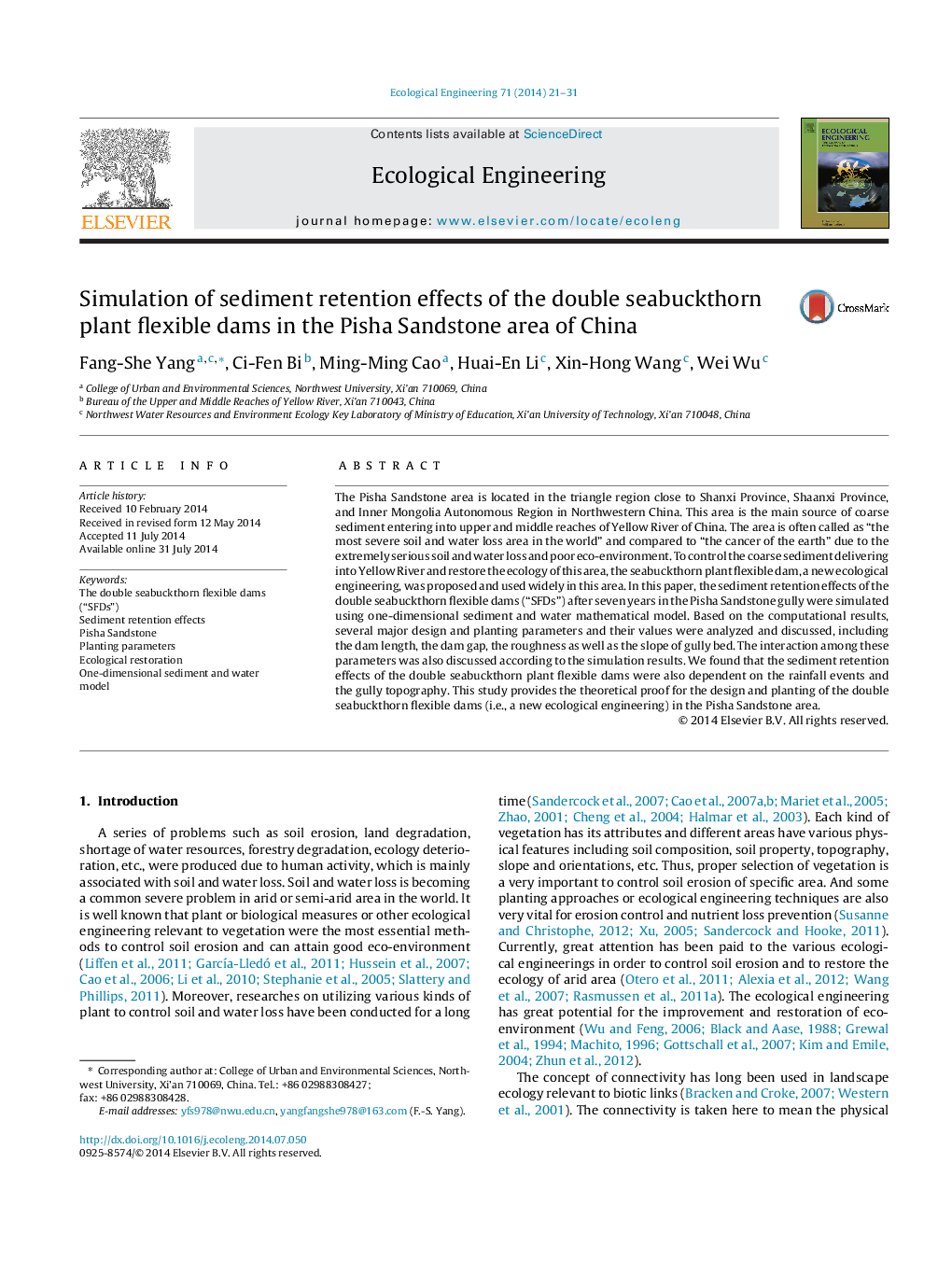| کد مقاله | کد نشریه | سال انتشار | مقاله انگلیسی | نسخه تمام متن |
|---|---|---|---|---|
| 4389132 | 1618028 | 2014 | 11 صفحه PDF | دانلود رایگان |
The Pisha Sandstone area is located in the triangle region close to Shanxi Province, Shaanxi Province, and Inner Mongolia Autonomous Region in Northwestern China. This area is the main source of coarse sediment entering into upper and middle reaches of Yellow River of China. The area is often called as “the most severe soil and water loss area in the world” and compared to “the cancer of the earth” due to the extremely serious soil and water loss and poor eco-environment. To control the coarse sediment delivering into Yellow River and restore the ecology of this area, the seabuckthorn plant flexible dam, a new ecological engineering, was proposed and used widely in this area. In this paper, the sediment retention effects of the double seabuckthorn flexible dams (“SFDs”) after seven years in the Pisha Sandstone gully were simulated using one-dimensional sediment and water mathematical model. Based on the computational results, several major design and planting parameters and their values were analyzed and discussed, including the dam length, the dam gap, the roughness as well as the slope of gully bed. The interaction among these parameters was also discussed according to the simulation results. We found that the sediment retention effects of the double seabuckthorn plant flexible dams were also dependent on the rainfall events and the gully topography. This study provides the theoretical proof for the design and planting of the double seabuckthorn flexible dams (i.e., a new ecological engineering) in the Pisha Sandstone area.
Journal: Ecological Engineering - Volume 71, October 2014, Pages 21–31
